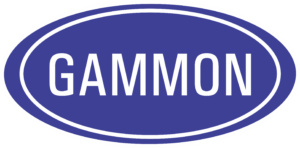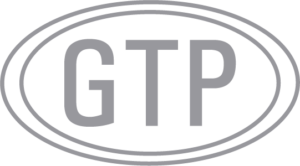A small airport had facilities for avgas only. To comply with environmental control rules, vapor recovery and bottom loading systems were added to the refueler trucks; they used a pressure fueling or “single point” nozzle. At a later date, the dealer ordered jet fuel facilities with equipment to bottom load the new truck.
To many people, these ingredients seem quite harmless. The airport fuel dealer does not realize that he has unwittingly created a potential disaster by making it possible for his jet fuel to fill an avgas refueler.
Responsible engineers had to prevent this mistake at large airports, more than 25 years ago. A fuel selection system was devised and became universally accepted all over the world. Equipment manufacturers sell special keying rings that fit on the bottom loading adapters on refueler trucks. The pressure fueling nozzle is modified with a shroud on its connecting end — its name is then changed to “Bottom Loading Coupler”. Product selection is achieved by bolting the adapter ring in place with the slot in its edge so that a pin in the coupler shroud will either prevent or permit connection. The slot in the ring on the adapter can be in any of 6 different positions to align with the pin in the shroud which can be in any one of 6 positions. The system can permit positive selection of 6 different types of fuel. Here is the recommended coding as published in American Petroleum Institute (API) Bulletin 1542:
| Position No. 1. | Avgas 100 or 100LL |
| 2. | Avgas 80 |
| 3. | Avgas 115 |
| Position No. 4. | Jet A |
| 5. | Jet B or JP-4 |
| 6. | Jet A-1 |
As more and more small airports add jet fuel to their list of services, the possibilities become greater and greater that jet fuel will be dispensed into an avgas airplane. Fatal accidents are definitely possible.
A truck driver is told to deliver a load of jet fuel to an airport that has a fuel farm with piping that is not color coded or labeled to identify avgas and jet fuel unloading connections.
This recipe resulted in an avgas storage tank being filled with jet fuel recently out west. Fortunately, the error was found before any aircraft were refueled.
Although color coding does not insure against human error, it surely can help to prevent a mistake. This is the API color code system:
| Jet Fuel (Jet A) | Black/black bands |
| Jet Fuel (Jet A-1) | Black/2 black bands |
| JP-4 (Jet B) | Black/3 yellow bands |
| Avgas 115 | Red/purple band |
| Avgas 100 | Red/green band |
| Avgas 100LL | Red/blue band |
| Avgas 80 | Red/red band |
An avgas-fueled Cessna 404 and a jet-fueled Cessna 441 are parked at an airport. They have the same basic airframe. Tell flight line personnel to refuel both aircraft.
How do you insure that each one gets the correct fuel? Frequently, the people who refuel aircraft are not thoroughly instructed. Conscientious though they may be, it is much too easy to refuel these aircraft with the wrong fuel. Other aircraft that cause confusion were identified in Shell Aviation News No. 450-1978:
| Piper Navajo/Chieftain | resembles | Piper Cheyenne |
| Rockwell Shrike Commander | resembles | Rockwell Turbo Commander 690B |
| Beech Queen Air B-80 | resembles | Beech King Air |
| Pilatus Porter PC-6 | resembles | Pilatus Turbo Porter PC-6 |
| Dornier Skyservant | resembles | Dornier Turbo Skyservant |
At least four recent fatal accidents have been caused by jet fuel getting into some of the above avgas planes.
What a shameful situation it is that general aviation aircraft are not color coded at their filler caps! Our FAA proposed this several years ago but pilots and aircraft owners rejected the idea because the FAA’s plan was to use 12 inch diameter circles around every filler. Pilots simply did not want big red blotches all over their wings. Who can blame them? Did the FAA counter propose smaller circles or color code marks? No – They simply folded their tent and dropped the entire subject. What would be wrong with the idea of making avgas filler caps red and jet filler caps black? Avgas refueling nozzles could be painted red and nozzles black! FAA Advisory Circular No. 20-43C recommends that fueling nozzles be “appropriately color coded” but there is no suggestion that the aircraft filler cap be similarly coded.
There is clearly no substitute for care when aviation fuels are involved. There is no U.S. Government or state organization that controls commercial aviation fuel handling practices. There are no FAA rules (Federal Aviation Regulations). There is no “big brother” looking over our shoulders. This is a totally self-regulated industry. Each airline and oil company has written its own standards for handling fuels; they are widely divergent. At the dealer level, compliance with oil company rules ranges from meticulous to non-existent. In the final analysis, the real control lies with people.
The reason why more fuel related aircraft accidents do not occur is that there are enough careful people who are finding the mistakes made by others. We recently learned of a case where motor gasoline was pumped into a jet fuel storage tank. The driver of the refueler truck noticed that the odor was wrong. Water was pumped into a single engine trainer. The pilot then checked the fuel sumps of the plane by habit, but without thinking. He failed to notice that something was wrong. His wife noticed and probably saved their lives.
People must be trained. They must be taught about safe practices. The person who refuels an airplane must think – he must be a professional in his line of work. Our lives are in his hands!

